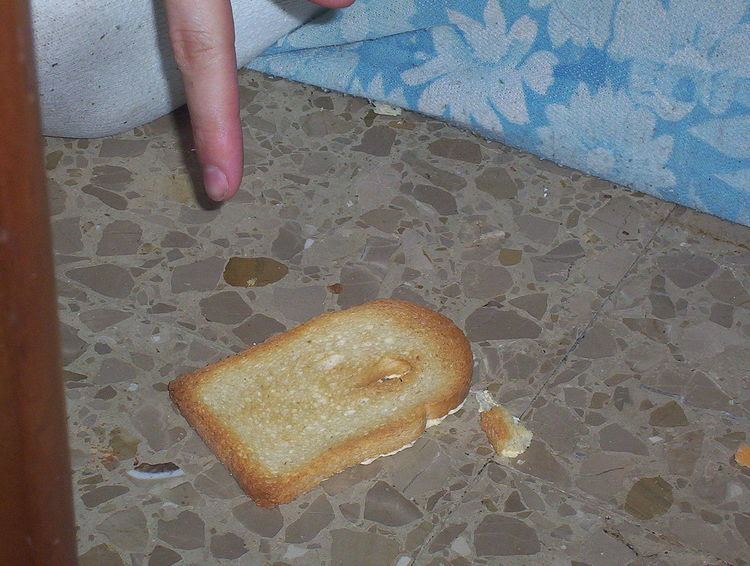 | ||
The buttered toast phenomenon is the tendency of buttered toast, when it falls, to land butter-side down in the majority of instances. Whilst this was once considered to represent mere pessimism, a form of Murphy's law, scientific evidence for the phenomenon has been found.
Contents
Origins
The phenomenon is said to be an old proverb from "the north-country". Written accounts can be traced to the mid-19th century. The phenomenon is often attributed to a parodic poem of James Payn from 1884:
I never had a slice of bread,
Particularly large and wide,
That did not fall upon the floor,
And always on the buttered side!
In the past, this has often been considered just a pessimistic belief. A study by the BBC's television series Q.E.D. found that when toast is thrown in the air, it lands butter-side down just one-half of the time (as would be predicted by chance). However, several scientific studies have found that when toast is dropped from a table (as opposed to being thrown in the air), it does fall butter-side down at least 62% of the time. One such study won the Ig Nobel Prize in 1996.
Explanation
When toast falls out of one's hand, it does so at an angle (simply by nature of it having slipped from its previous position of level to the ground). The toast then rotates. Given that tables are usually between two and six feet (0.7 to 2 meters), there is enough time for the toast to rotate about one-half of a turn, and thus lands upside down relative to its original position. Since the original position is usually butter-side up, the toast lands butter-side down. However, if the table is over 10 feet (3 meters) tall, the toast will rotate a full 360 degrees, and thus land butter-side up. Also, if the toast travels horizontally at over 3.6 miles per hour (1.6 m/s), the toast will not rotate enough to land butter-side down. In fact, the phenomenon is caused by fundamental physical constants.
Other factors
The added weight of the butter has no effect on the falling process, since the butter spreads throughout the slice. In any case, the weight of the butter is likely to be less than 10% of the weight of the slice of toast. Since most would be absorbed into the toast it would not significantly alter the centre of gravity.
However, buttering one side of a slice of toast alters the surface properties. This changes the level of drag and thus modifies the way the toast rotates as it falls.
A different effect is generated if one presses hard enough with one's knife while buttering. This produces a curved piece of toast that is more likely to land butter side up due to its shape.
